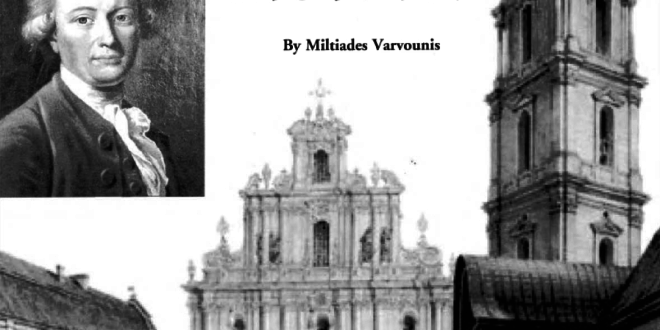Today, Johann Georg Adam Forster is not a household name. This contrasts very much with his own time, when he was the author of a celebrated book about James Cook’s second voyage to the South Pacific, A Voyage Round the World. As a traveler and naturalist, he made major contributions to the natural sciences and travel literature of his time. Today’s Lithuanians may have heard or read that this renowned scientist was a professor at Vilnius University in 1784-1787. His letters from Vilnius and excerpts from his diary describe the Lithuanian capital as well as the manners of the local noblemen.
Childhood and early years
Forster’s life has aroused the interest of many historians and researchers. Georg Forster was born in 1754 in the Polish province of Royal Prussia, near Gdansk. His father was Johann Reinhold Forster, a Reformed pastor with a partially Scottish family background, who had an interest in botany and geography that he encouraged in his son. In 1766, the family moved to England, and from 1772 to 1775, the Forsters took part in James Cook’s second expedition to the Polynesian Islands. Georg researched the zoology, botany and ethnology of the South Seas and drew illustrations of large numbers of animals and plants. His descriptions of the natives are marked by an open-minded anthropological approach, based on his knowledge of the Polynesian languages. His ethnological work is remarkably free of both the Romanticism and the racial prejudice common in numerous travel books and diaries of the time.
Published in 1777, Forster’s book was a major success and made the author famous. Vividly written and precise, it remains a prominent work of Enlightenment travel literature and a valuable source for ethnologists and naturalists to this day. As a result of his work, Forster was admitted to the Royal Society at the early age of 23. He was granted similar titles by academies from Madrid to Berlin. His books are considered classics of German literature.
Despite the fame and income he earned from his prolific writings, Forster was in permanent debt. In search of a steady income, he became a professor of natural history at the Collegium Carolinum in the German town of Kassel and corresponded with important figures of the German Enlightenment: Goethe, Lessing and Herder. But the ambitious young scientist was deeply dissatisfied with this minor academic post and was hoping to reach the same scholarly status as his father, who held a professorship at the University of Halle under the patronage of the Prussian monarch, Frederick the Great. He was also involved with the Rosicrucians in Kassel, but by 1783, he saw that his contacts with the secret order not only led him away from his beloved science, but also deeper into debt.
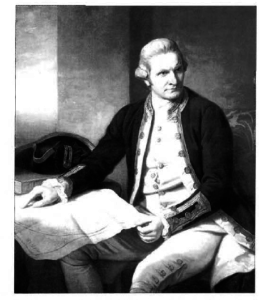
For a while, Forster was in desperate financial straits, and he saw no future prospects in the German lands. Fate, however, smiled on him, and the solution came from his birthplace, Poland. In 1773, the Grand Duke of Lithuania and King of Poland, Stanislaw II August Poniatowski, and the Sejm (Parliament) created the Commission on National Education, the central educational authority in the Lithuanian-Polish Commonwealth. Because of its broad authority, it is considered the first Ministry of Education in history and an important achievement of the Lithuanian and Polish Enlightenment. It was this commission, which actively sought to lure various European academic celebrities to Vilnius and Cracow universities, that invited Forster to become chair of Natural History at the prestigious Vilnius University (Schola Princeps Magni Ducatus Lithuaniae) in 1784. Forster, with his cosmopolitan upbringing, was happy to accept this proposal, especially when the university offered to pay his debts.
It was not by chance that Forster was invited to teach in Vilnius. He was personally acquainted with Martynas Počobutas, rector of Vilnius University, and with Franciszek Bukaty, ambassador of the Lithuanian-Polish Commonwealth in London, who had offered Forster a post at the University of Cracow in 1778. Under these favorable circumstances, a new chapter in Forster’s life began, and he did not waste time preparing for his move to the chief city of the Grand Duchy of Lithuania.
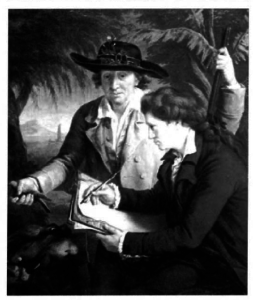
Forster’s trip to Vilnius
It is difficult to say what Late Baroque-era Vilnius was like. The city had its biblical equivalent in the infamous Babylon, since it was the meeting ground for a whole array of languages: Slavic (Polish, Ruthenian, Russian, Old Church Slavonic), Lithuanian, Latin, Yiddish, Hebrew, German and Armenian. Vilnius, despite its diminished political status, shrinking population, and deepening provincialism, was still, by far, the largest city in the Grand Duchy.
Vilnius is located more than 1,000 miles northeast of Kassel. At the end of the eighteenth century, this distance could be covered in a few weeks. But Forster’s trip lasted almost six months, because he wanted to broaden his professional contacts and academic knowledge on the way. In the Saxon town of Freiberg, he met Prince Stanislaw Poniatowski, nephew of the ruler of the Lithuanian-Polish Commonwealth and treasurer of the Grand Duchy, who, in Forster’s words, “portrayed Lithuanians in a most positive light,” describing Vilnius as “the most pleasant place in Poland” and the university as having “a much better reputation than the University of Cracow.” The prince, however, cautioned the naturalist about the slow penetration of progressive ideas into the politically conservative Grand Duchy.
Before entering Poland, Forster stopped in Vienna, where he lingered for a few months, enjoying elite social and salon gatherings. He was granted an audience with the Holy Roman Emperor, Joseph II, on 24 August 1784. During their conversation, Forster expressed the hope that he would discover a nation in Lithuania as gentle as the Tahitians of the South Pacific, but Joseph II was sceptical on that point. According to Forster, the emperor, who could not believe there was a university in Vilnius, said to him: “I think we will see you in Vienna again soon, because you won’t be able to stand it long among the Poles.” Forster would soon come to share the Emperor’s negative view.
In Warsaw, Forster not only met Prince Adam Kazimierz Czartoryski, who was a cofounder of the Commission on National Education, but was also introduced to King Stanislaw II August Poniatowski in Gardinas (current Grodno in Belarus) where the Sejm was held. Forster also made the acquaintance of Charles Henry Nicholas Othon, the Prince of Nassau-Siegen, who had circumnavigated the globe as a passenger with Captain Cook’s French rival, the navigator Louis Antoine de Bougainville and arrived in Gardinas via Constantinople. Forster had a chat with Othon and the king, who were eager to learn more about Cook’s voyages and the South Pacific.
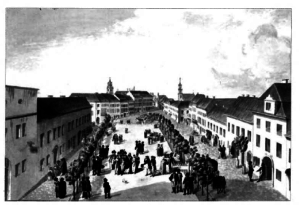
From Gardinas, Forster sent a report to his fiancee, Therese Heyne, in Kassel, that during the Sejm meeting, “the entire Polish and Lithuanian nobility is assembled. “ Then he added: “I am slowly beginning to acquaint myself with the customs of this original nation… despite some deficiencies in the liberal constitution of this kingdom, I am extremely delighted to see that freedom is enjoyed here by every noble Pole.” To his other correspondents, Forster mentioned that locals adored everything French and hated everything German. As a German, he had a negative opinion of this Polish hatred towards his people: “In Poland, to call somebody a German is the worst insult; as a result, the education of the upper nobility is entirely in the hands of the degenerate French barbers and modistes .” On the other hand, the German stereotype of Poland and Lithuania was also negative, and Forster was not an exception in his attitude. For Germans and Austrians, the Lithuanian-Polish Commonwealth was understood to be a political anachronism of no positive value to European culture.
A few days later, on his way to Vilnius, Forster stayed in a humble inn, joining an unusual drinking party with a Catholic priest and a Jewish postmaster. In late November, Forster finally reached his final destination, writing in his travelogue about his arrival: “Thursday, November 18 [1784] At 5 a.m. I leave from a very poor Jewish inn and arrive at 9 a.m (4 miles) in Gostki or Swetnik, at another Jewish-run post station, where I change my clothes and continue the trip to Vilnius (3 miles), which I reach at one o’clock. One mile before Vilnius, the environment near the Wilia (Neris) River becomes very beautiful: steep sandy hills and chalk cliffs crowned with splendid forest greenery. The location of Vilnius is unexpectedly wondrous. Once you come close to the city, the view from the sur rounding hills into the valley, where this entire great city, graced with so many towers, is located, is truly impeccable and magnificent.”
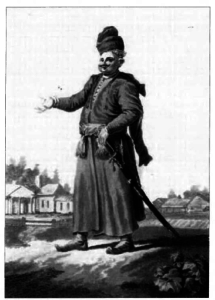
Despite his German origins, the young naturalist was welcomed by the town’s social elite. He enjoyed local hospitality, claiming that “people socialize without any gene [modesty] and even their appearance is less restrained than in other places. Tolerance rules absolute!” Soon, Forster was installed in lodgings inside the so-called Collegii medici (22 Pilies Street), next to two French surgeons, an Italian professor of chemistry, and a Hungarian professor of medicine. It was time for him to prove his educational skills at the university.
His work
After settling down, Forster immediately engaged himself in preparing the curriculum for the natural science courses and updating the laboratory and library in the Department of Historiae Naturalis, which before him was headed by Professor Jean- Emmanuel Gilibert, a French botanist, famous for his work, Flora Lithuanica inchoata, seu enumeratio plantarum , quas circa Grodnam collegit et determinavit Joannes Emmanuel Gilibert. But Forster’s inability to learn the Polish language, which according to him was “a difficult and barbaric language, with much too many different consonants, which are so lacking in the Tahitian language,” made Forster’s life in Vilnius less sociable. Although he was told to teach in Polish, he gave his instructions at the university in Latin, which neither he nor his students knew very well. Soon the ambitious professor remembered Emperor Joseph’s words, as well as the negative German stereotypes about Poland, and turned his language problems into a hatred of everything Polish, including Vilnius.
Despite the fact that his fiancee arrived in Vilnius early in 1785, Forster’s mood did not improve, and he concluded that Vilnius was unworthy of his talents: “Here, where science is covered by the silence of the night, where scientific achievements are not rewarded, even by a simple honorary prize, where the most renowned and celebrated people are only those who own the most serfs or gamble the most money – here, a foreigner, because of the apathy of his compatriots, gradually starts to feel abandoned by the better part of civilised society… in addition, the country is gripped by a senseless patriotism, an irrational governing structure and a sickly state Constitution. Here, French opulence conjugates with Sarmatian bestiality, and in order to survive and stay vigorous and mentally alert, one has to become static, remorseless and turn his eyes away from all this nonsense…”
After some time, while “the city is in a terribly deplorable state,” remarked Forster, “ meo judicio, it still looks much better than Cracow and overwhelmingly surpasses Gardinas.” Forster took Vilnius’ intellectual isolation as a professional challenge and wrote to his father-in-law, “Vilnius is probably the best place in the world to be left in peace, where I can patiently, thoroughly study a number of interesting subjects; this fact eases my otherwise terrible condition.” He also confessed that the capital of the Grand Duchy was a far greater city than most provincial German towns.
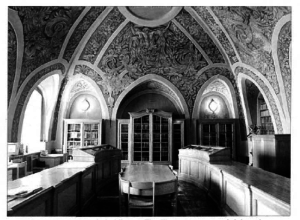
Forster was expected not only to teach botany, zoology and mineralogy, but conduct research on local resources of agriculture, medicine, and the economy. For that reason, he arranged expeditions to the suburbs of Vilnius, where he surveyed plants, minerals, etc., and kept a written record of his finds. He was in charge of the botanical garden, founded by his predecessor Jean-Emmanuel Gilibert in 1781. Later, he wrote articles on the vegetation of Vilnius, Hortus botanicus Vilnensis and Diarium faunae floraeque Vilnensis. He also expanded the content of his lectures, introducing issues of ethnography. His students could examine item: collected during his sea voyages as well as his valuable drawings. They were encouraged by Forster to travel, explore nature and take up their own research.
When not obliged to lecture, Forster was a pleasant companion, expert in many fields and eager to share his opinion with students and colleagues. Despite his poor knowledge of Polish, he made the close acquaintance of several well-known personalities, including the influential bishop of Vilnius, Ignacy Jakub Massalski. In his free time, Forster took advantage of his “intellectual isolation” and wrote books and brochures on the South Seas, including De Plantis Esculentis Insularum Oceani Australis Commentatio Botanica and Florulae Insularum Australium Prodromus.
In addition to his botanical studies, Forster took an interest in the daily life of the local lower classes as well as the physical appearance, hairstyle and dress of the Lithuanian and Polish nobility, but showed less interest in the Jewish side of the city. Local character, according to the German professor, was a laughable “mixture of Sarmatian or nearly New Zealander rudeness and French sophistication.” Lithuania, in general, was according to him, “an unfortunate country ruled by fierce anarchy.” Therese, now his wife, shared his opinion, exclaiming, “I cannot wait to become a loyal subject of Russia, Austria or Prussia, when the next partition of this country begins anew.” Her wish would come true regarding the partition, but not of becoming a subject of one of these empires.
In the summer of 1787, Forster accepted an offer from Russia to participate in a journey around the globe with Commodore Grigory Mulovsky to undertake an extensive scientific investigation of the Asian and North American coastlines. He was thrilled by this proposition, but the Vilnius University Senate was unwilling to release him from his teaching commitment. Russian Empress Catherine II, ex-lover of King Stanislaw August II Poniatowski, intervened and bought out Forster’s seven-year contract, an action that clearly shows how popular and celebrated a scientist Forster was (and how powerful Russia had become.)
At summer’s end, Forster and his wife left Vilnius for London. Before leaving, he gave Vilnius University rector, Martynas Počobutas, some books, a collection of fossils, and other natural objects he had acquired for the university. Meanwhile, war had broken out between Russia and the Ottoman Empire, and the Mulovsky Expedition was postponed. Forster next settled in the Rhineland, where he became head librarian of Mainz University. At age 39, on January 10, 1794, Forster died of pneumonia in Paris. Fate was cruel to him—he died an isolated man, forsaken by his wife, even by his father. One year later, the Lithuanian-Polish Commonwealth also ceased to exist.
Conclusions
Despite the fact that Forster was influenced by negative German stereotypes toward Lithuania- Poland, he took his professional activities seriously during his stay in the Grand Duchy. He never expressed prejudice of any kind in his published works, only in a few personal letters. As a creative researcher, he brought new ideas to the disciplines of geography, zoology, biology and ethnology, making his presence valuable to Vilnius University. His original work made him one of the most perceptive scientists among the Enlightenment intellectuals teaching there.
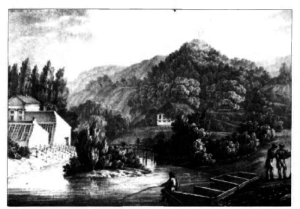
His invitation from the Commission on National Education is only one example of a larger effort to turn Vilnius University into a center of European knowledge. Forster’s reputation was expected to raise the prestige of the university and attract more bright students to its science classes. In a letter to his father, before his trip to Vilnius, he explained that he was asked to teach in the Lithuanian capital because of his “significance,” but expressed hope that he might be “someone of real value, not only of significance.”
Even though his presence in Vilnius gave him little emotional satisfaction, because of his German stereo types about Poland and lack of knowledge of Polish, Forster managed to keep himself busy as an academician, always alert to the latest information in his field. He proved to be an important member of academic life in the Grand Duchy, and the legacy of his work at the university was of considerable importance to Lithuanian and Polish science. Ironically, thanks to his three-year “intellectual isolation,” Forster confessed in one of his letters that he would not have done nearly as much in the German lands as he did in Lithuania over the same period.
One of Forster’s students, Lithuanian nobleman and clergyman Stanislovas Bonifacijus Jundzilas, followed in his steps. He became head of Vilnius University’s Natural Sciences Department in 1802. He moved the botanical garden from its original location on Pilies Street to a much larger plot at the foot of Gediminas Hill (where Sereikiškių Park is today), where he reorganized it and greatly expanded. Its plant collection was one of the richest in Europe, a project that probably would not have been realized, if not for Forster having taught in Lithuania.
 DRAUGAS NEWS Lithuanian World Wide News in English
DRAUGAS NEWS Lithuanian World Wide News in English
